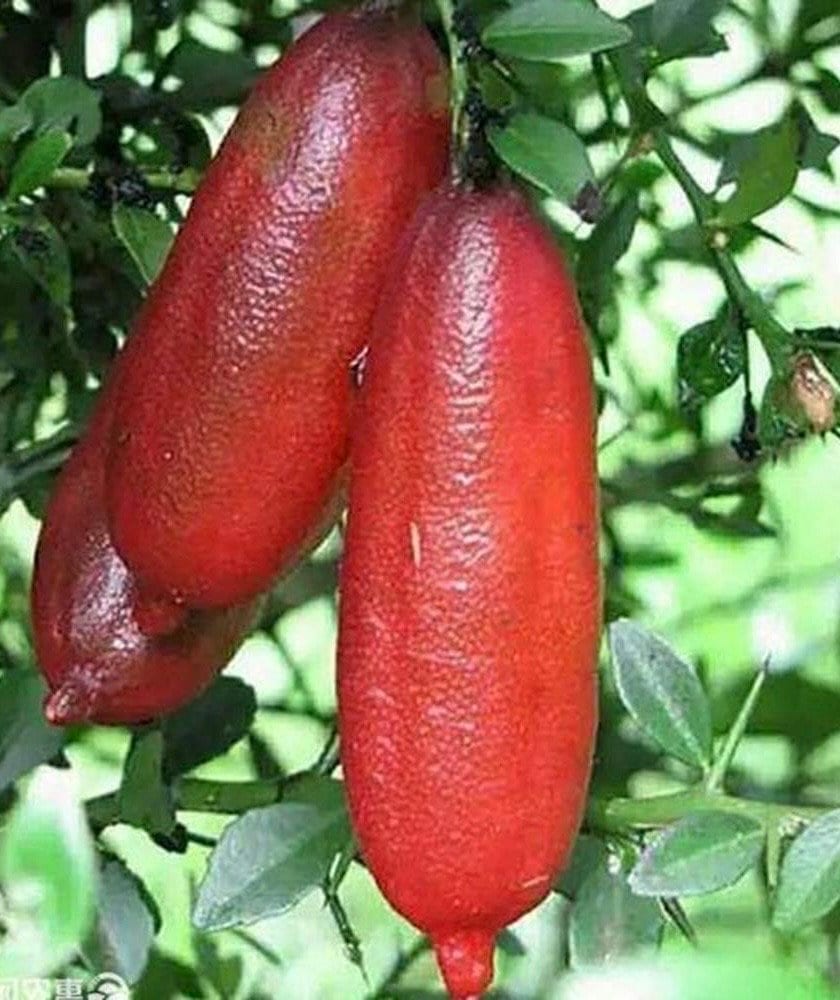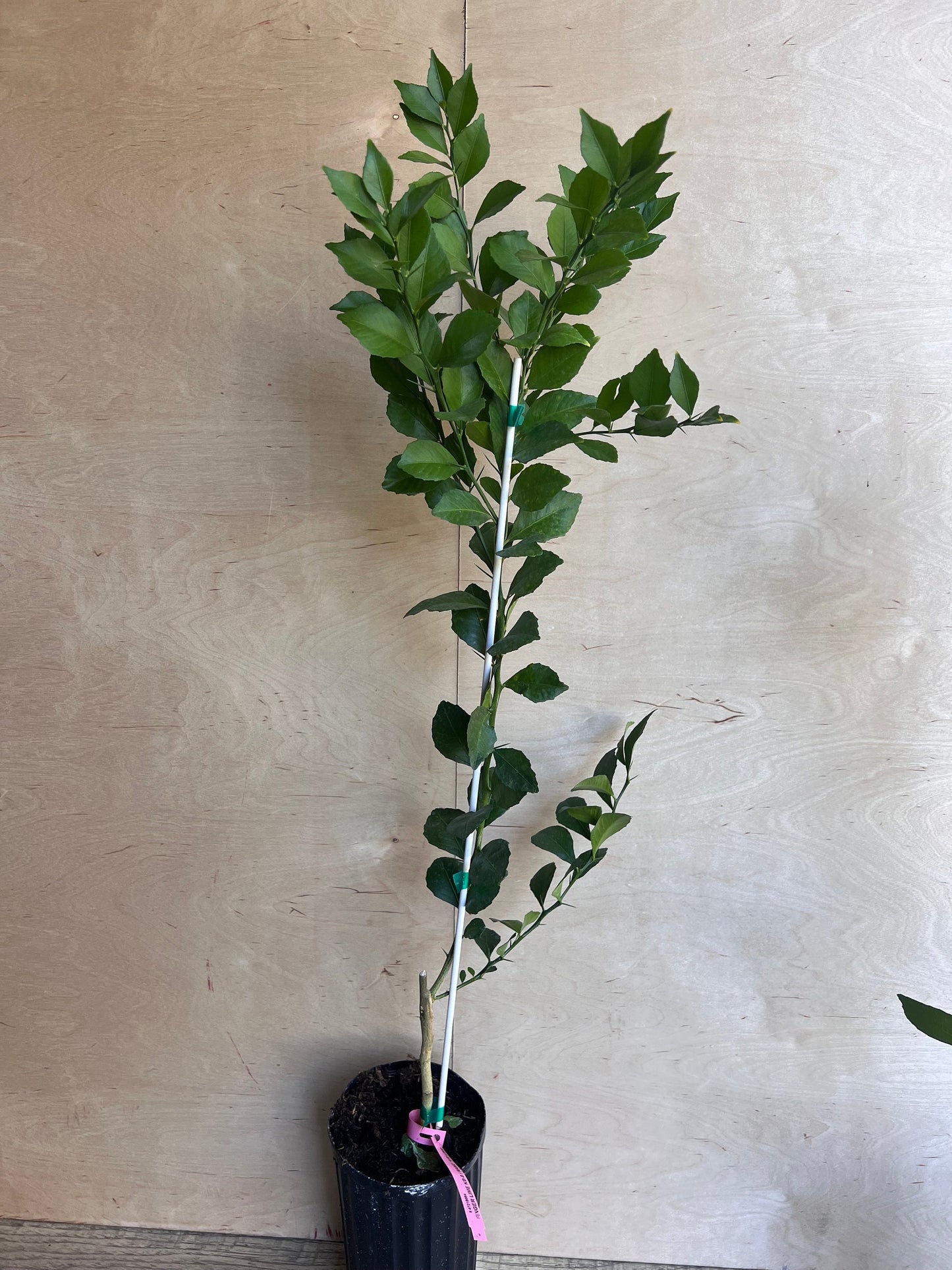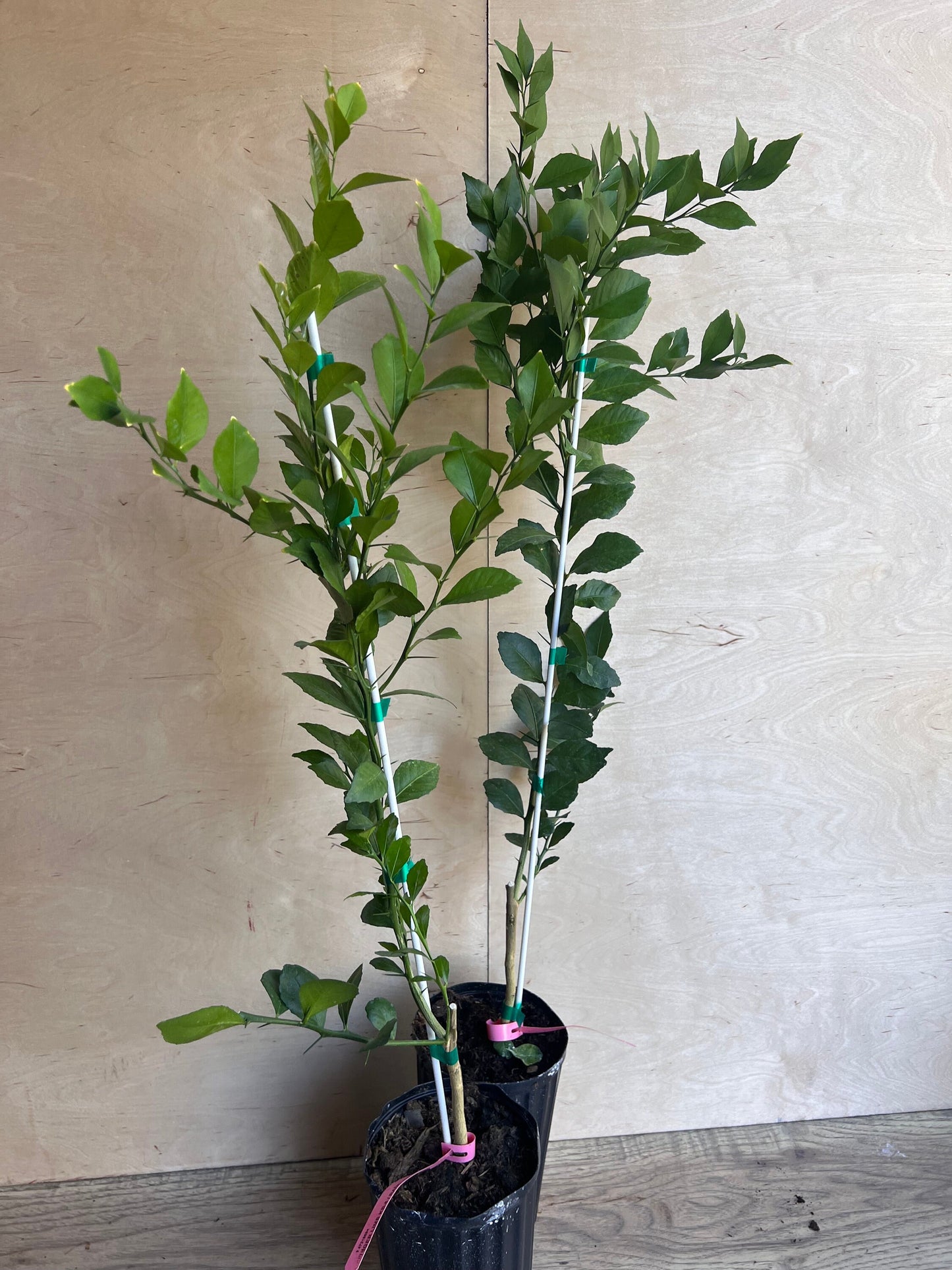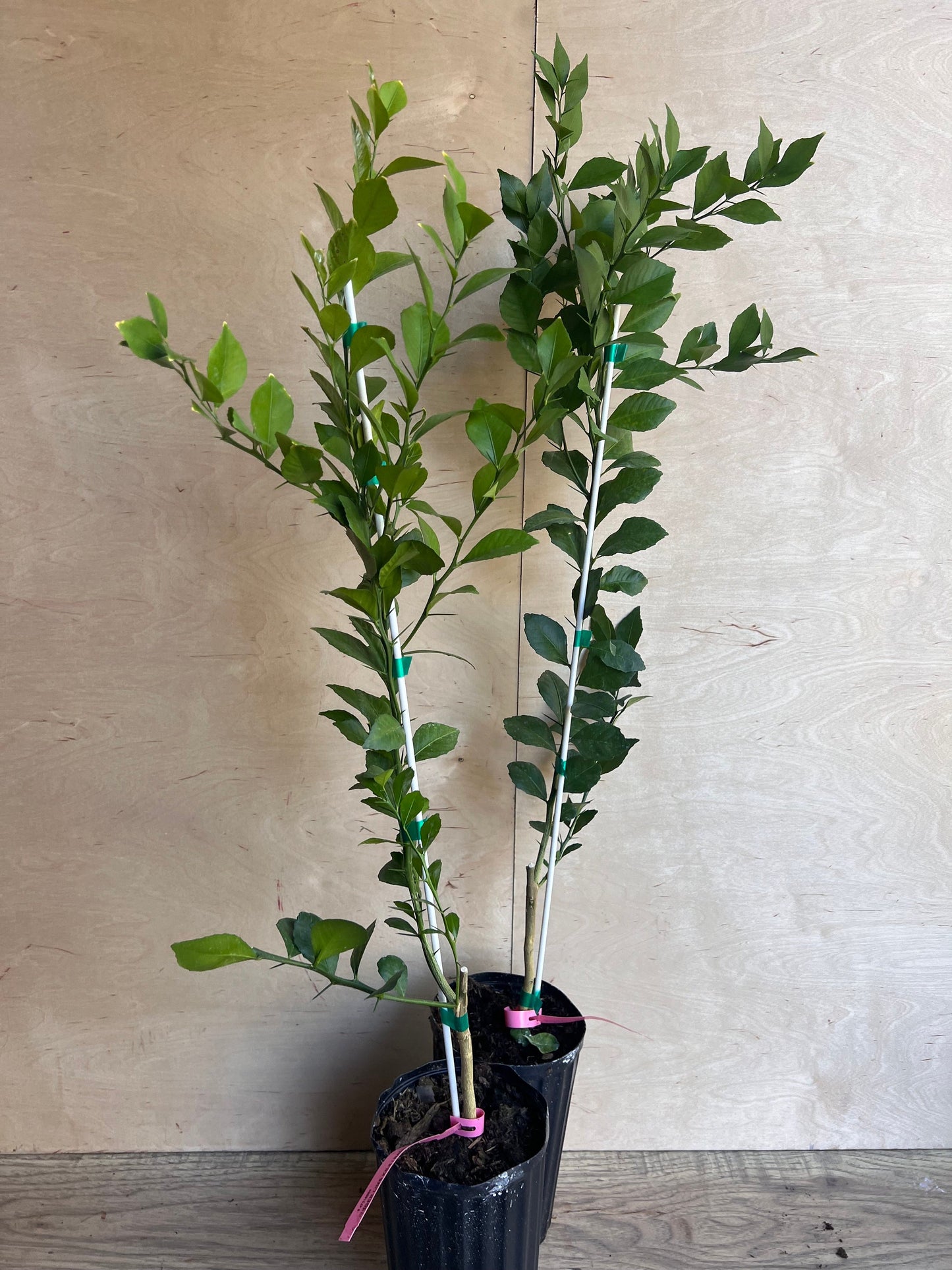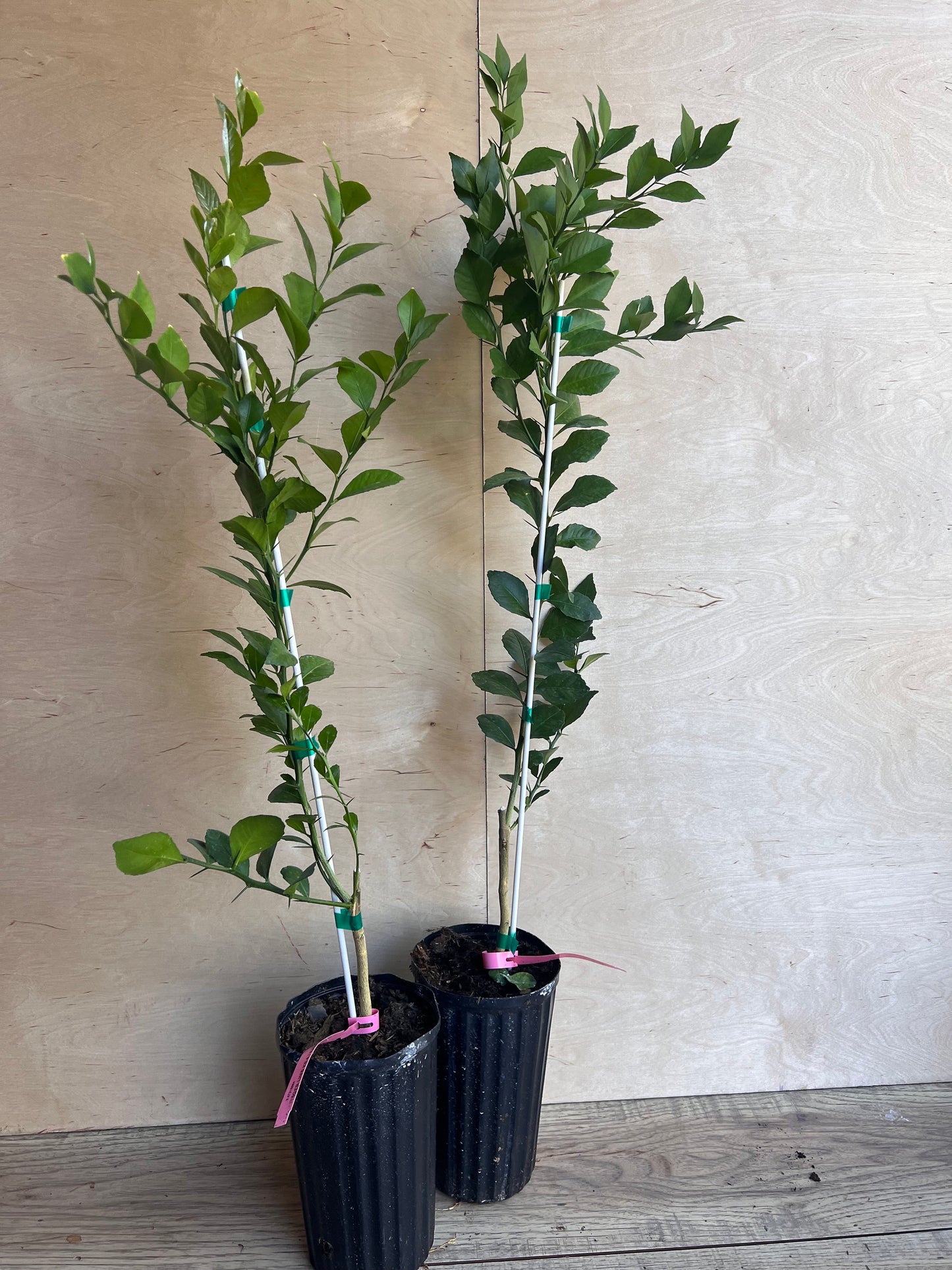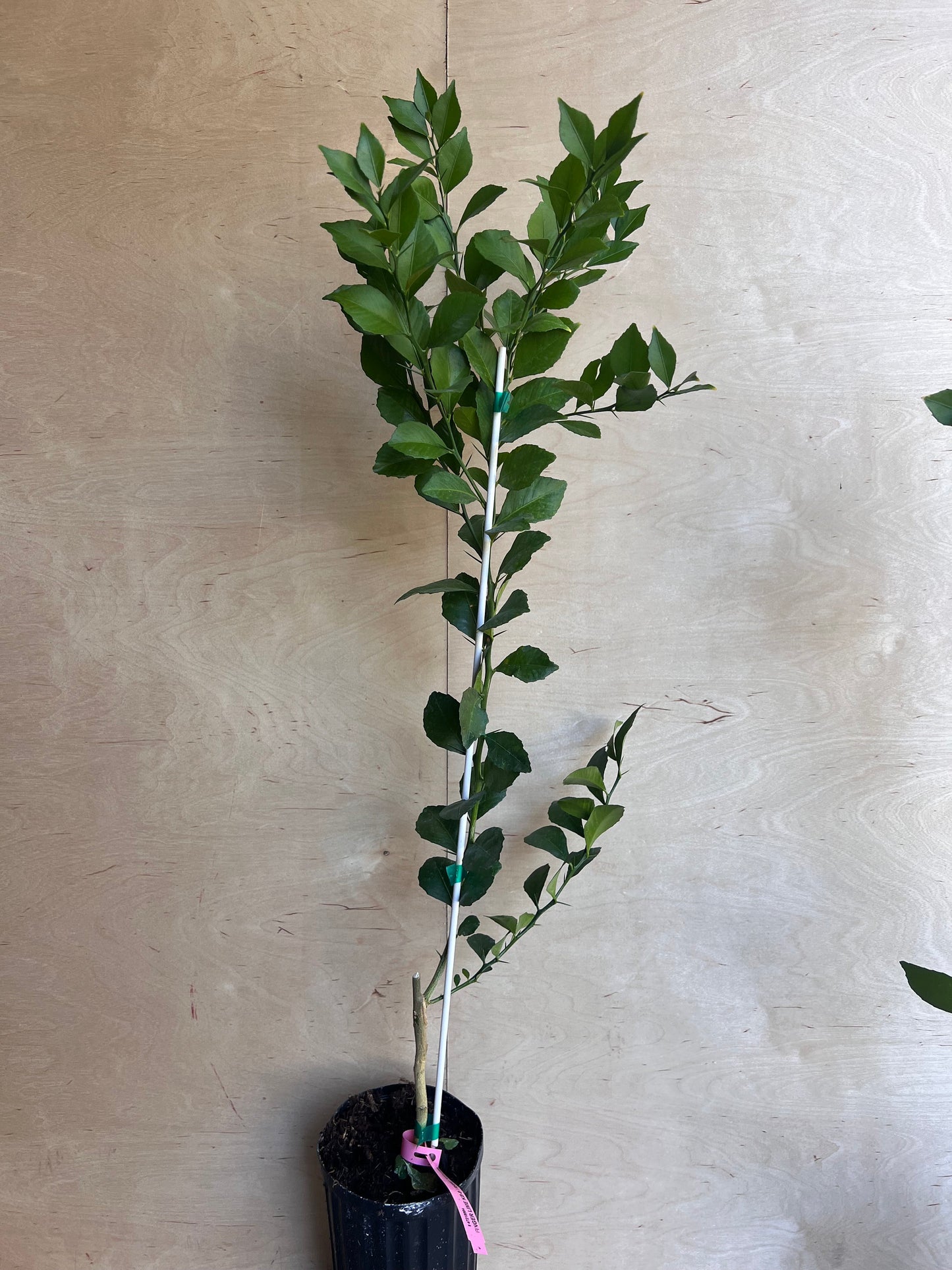Red Finger Lime Tree , 1/2 Gallon Pot , UF KB -8, Microcitrus australasica in 1/2 Gal Pot,air layered, Florida Shipping Only
Red Finger Lime Tree , 1/2 Gallon Pot , UF KB -8, Microcitrus australasica in 1/2 Gal Pot,air layered, Florida Shipping Only
Couldn't load pickup availability
Note: You will receive one Finger Lime tree in 1/2 Gal pot similar to the pictures
The Red Finger Lime Tree (Citrus australasica), also known as the Australian Finger Lime, is a unique and exotic citrus variety native to the rainforests of Australia. It produces small, elongated fruit that resemble fingers, with a vibrant red to purple skin that sets it apart from traditional limes. Inside, the fruit contains a tangy, caviar-like pulp with tiny, translucent vesicles that burst with a tart, citrusy flavor, making it a popular ingredient in gourmet dishes and cocktails. The tree itself is relatively compact, typically growing to about 6-12 feet tall, and thrives in well-draining soil with plenty of sunlight and moderate watering. It is frost-sensitive but can be grown in USDA zones 9-11 or in containers that can be moved indoors during colder months. With its striking appearance, distinctive flavor, and hardy nature, the Red Finger Lime Tree is a prized addition to gardens and orchards in warmer climates
1. Light:
Red Finger Lime trees need full sun to thrive and produce fruit. Ideally, they should receive at least 8 hours of direct sunlight daily. If growing indoors, place the tree near a bright window or under a grow light.
2. Soil:
These trees prefer well-draining, slightly acidic soil. A mix designed for citrus or a sandy, loamy soil works well. It's important to ensure good drainage to prevent root rot, so avoid heavy or clayey soils. You can also mix in some organic compost to improve soil structure and fertility.
3. Watering:
Water the Red Finger Lime Tree regularly, especially during hot, dry periods, but be careful not to overwater. Allow the top 1–2 inches of soil to dry out between waterings. During winter, when the tree is not actively growing, reduce watering to prevent waterlogging. Make sure the pot (if growing in a container) or the planting site has proper drainage.
4. Temperature:
Red Finger Lime trees thrive in warm temperatures between 60°F to 85°F (15°C to 29°C). They are frost-sensitive, so if you live in a cooler climate (zones 9-11), make sure to protect the tree from frost during winter. In colder areas, they can be grown in containers and moved indoors or into a greenhouse during the winter months.
5. Humidity:
While not overly demanding in terms of humidity, Red Finger Limes appreciate moderate humidity. If growing in a dry environment, you can mist the leaves occasionally or place a humidifier nearby to mimic the tree's native rainforest conditions.
6. Fertilizing:
Fertilize your Red Finger Lime tree with a balanced, slow-release fertilizer formulated for citrus trees, especially during the growing season (spring through summer). Follow the manufacturer’s instructions for dosage, and avoid over-fertilizing, which can lead to excess foliage growth at the expense of fruit production. You can also supplement with micronutrients like magnesium and iron if the tree shows signs of deficiency.
7. Pruning:
Prune your Red Finger Lime tree to maintain its shape and remove any dead or damaged branches. This also helps to improve airflow and reduce the risk of fungal diseases. Pruning should be done in early spring or after the fruiting season. Be careful not to remove too much of the tree’s canopy, as this could reduce fruit production.
8. Pollination:
Red Finger Lime trees are self-pollinating, meaning they don’t require another tree to produce fruit. However, having more than one tree can increase the likelihood of higher yields. The flowers are typically white or pink and attract pollinators like bees. If grown indoors, you may need to hand-pollinate by gently brushing the flowers with a soft paintbrush.
9. Pests and Diseases:
While generally resistant to pests, Red Finger Lime trees can occasionally be affected by aphids, mealybugs, and scale insects. Regularly inspect the leaves and stems for any signs of pests. If you find any, treat the plant with insecticidal soap or neem oil. Fungal diseases like root rot can occur in overly moist soil, so be sure to maintain proper watering practices and ensure good drainage.
10. Container Growing:
If you're growing your Red Finger Lime in a container, choose one that’s large enough to accommodate the tree’s root system as it matures. Use a well-draining potting mix designed for citrus trees or a cactus mix with added perlite. Make sure to repot every 1-2 years to provide fresh soil and prevent the tree from becoming root-bound.
11. Harvesting:
The fruit of the Red Finger Lime Tree typically ripens in late winter to early spring. The fruit is ready to be harvested when the skin is fully colored (from green to deep red) and slightly soft to the touch. Use scissors or pruning shears to cut the fruit from the stem.
By following these care guidelines, your Red Finger Lime tree will reward you with its unique, tangy fruit and striking appearance. With the right conditions, it can be a fruitful and attractive addition to your garden or home.
Share
